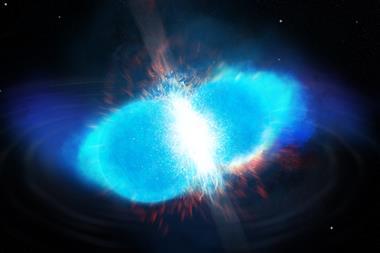
Title: Extending the Boundaries of Chemistry: First Superatoms Featuring Actinides Challenge Established Bonding Norms
In an innovative breakthrough, scientists have engineered the inaugural superatom mainly composed of actinides, paving the way for new exploration in f-block element chemistry and adding an intriguing dimension to the already remarkable realm of superatoms.
Guided by Professor Stephen Liddle at the University of Manchester, UK, the team has crafted a unique molecular structure that places thorium—one of the highly challenging and radioactive actinides—at the core of a superatom cluster. This experiment not only challenges long-held views regarding the chemical behavior of actinides but also uncovers previously unobserved magnetic and bonding characteristics that signify a notable advancement in the discipline.
What Are Superatoms?
Superatoms are distinctive groups of atoms that replicate the electronic behavior of individual elements due to quantum confinement effects. First detected approximately 40 years ago, these clusters can exhibit surprisingly altered chemical properties. A famous instance is the Al13 cluster, which demonstrates electron shell behavior akin to a chlorine atom, enabling new avenues for chemical reactivity and molecular assembly unattainable with traditional atoms.
These unique traits make superatoms appealing as building blocks in nanotechnology and molecular engineering, since their properties can be tailored based on their structure and makeup.
The Role of Actinides
Actinides, which include elements such as uranium and thorium, occupy the f-block of the periodic table. They are well recognized for their radioactivity and intricate electron configurations, making them particularly challenging to manipulate and analyze under controlled conditions. Their erratic chemical behavior hinders our understanding of their bonding interactions—especially with one another.
Typically, actinides have been integrated into superatoms as secondary elements, nestled among more stable transition metals or main-group elements. However, the team from Manchester’s new superatom elevates actinides to a prominent position.
The Trithorium Trio
At the heart of the research is the formation of a trithorium cluster—three thorium atoms connected in a cyclic, aromatic configuration—a feat previously deemed nearly unattainable due to expectations that actinide–actinide bonds would be fragile and unstable. The supporting structure for this trithorium core consists of chlorine atoms and additional wing-like aromatic rings attached to each thorium atom.
The innovative structure offers compelling evidence for strong actinide–actinide bonding and contests conventional models of chemical stability and bonding established by periodic trends.
A Magnetic Surprise
While this discovery alone would be exceptional, the molecule also unveiled an unforeseen magnetic characteristic. Despite being paramagnetic based on electron configuration (which should lead to attraction to magnetic fields), the cluster exhibited clear indications of diamagnetism—meaning it was repelled by magnetic fields.
This anomaly is ascribed to what Liddle refers to as “exalted” diamagnetism, originating from the aromatic quality of the actinide ring. Aromatic rings, like those in benzene, are known to display diamagnetic traits, but this type of magnetic behavior is remarkably rare—and virtually unheard of—for a molecule constituted of f-block elements. The team inferred that the cluster’s behavior resembles that of a group 1 element, transforming the actinide-based molecule into a ‘super alkali-metal.’
Implications for Chemistry and Material Science
Professor Thomas Albrecht, director of the Nuclear Science and Engineering Center at Colorado School of Mines, praised this accomplishment as a significant progress. According to Albrecht, the “superatom behavior, along with the quite counterintuitive aromaticity resulting from it, is really not what most would expect. It’s an impressive study.”
The capacity to induce and manipulate such extraordinary traits using hefty, radioactive elements like thorium opens up a plethora of new research avenues. These encompass:
– Creating functional molecular materials that utilize unique magnetic or electronic features.
– Examining new forms of aromaticity and bonding involving f-block elements.
– Investigating potential uses in quantum computing, catalysis, or nuclear waste remediation.
Conclusion
The development of the first superatom predominantly composed of actinides is more than just a demonstration of feasibility—it’s a transformational change in the way chemists perceive bonding, magnetism, and the periodic table itself. As the scientific community reevaluates the fundamental principles that govern element interactions, this finding serves as a testament to the surprising and sometimes paradoxical nature of cutting-edge chemical research.
By redefining the parameters of actinide chemistry, this trithorium-centric superatom offers an intriguing view into a new molecular domain—where rare and unstable elements present extraordinary and novel characteristics.